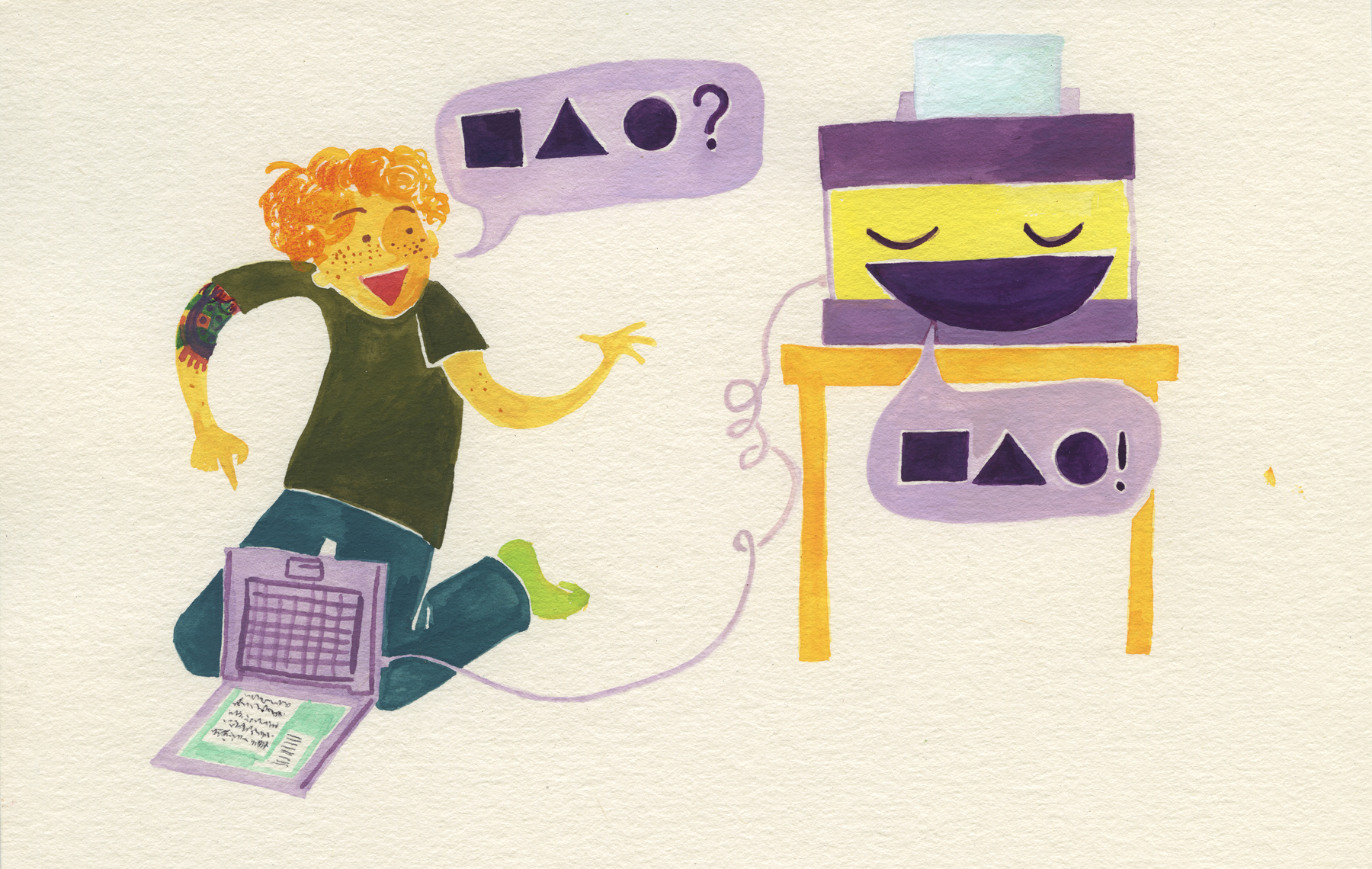Difference between revisions of "Affective Computing"
Caseorganic (Talk | contribs) |
Caseorganic (Talk | contribs) |
||
| (10 intermediate revisions by 2 users not shown) | |||
| Line 2: | Line 2: | ||
===Definition=== | ===Definition=== | ||
| − | + | Affective Computing is a term used to describe the process of developing computing architectures that account for human concerns such as usability, touch, access, persona, emotions and history. Those who build systems by these principles think of computing as a solution or a helper for problems or essences of human living, especially in an industrial world. | |
| − | + | Many examples of affective computing exist. One of the most notable examples was built by [[Kelly Dobson]] while she was at MIT Media Lab. Instead of teaching machines to understand humans, Dobson programmed a blender to understand voice activation, but not the typical voice one uses.<ref>Dobson, Kelly. Blendie. MIT Media Lab. 2003-2004. http://web.media.mit.edu/~monster/blendie/ Accessed 02 July 2011.</ref> Dobson's work called to question the notion that machines should always be built to understand human commands instead of simply understanding a command similar to its own native machine language. | |
| − | + | Instead of saying "Blender, ON!", Dobson made an auditory model of a machine voice. If she wanted the blender to begin, she simply made blending noises at it. The low-pitched "Rrrrrrrrr" she made turned the blender on low. If she wanted to increase the speed of the machine, she increased her voice to "RRRRRRRRRRR!", and the machine increased in intensity. This way, the machine could understand volume and velocity, instead of a human voice. | |
| − | + | The principles of affective computer represent a next step in making computers that are responsive and helpful to humans. At Carnegie Mellon University, a pillow was developed could stored a person's hug for future playback.<ref>Foo, Juniper. Hug Pillow. CNET News Asia. Published 23 Nov 2004. http://asia.cnet.com/crave/hug-pillow-62100099.htm Accessed 02 June 2011.</ref> This pillow allowed one to feel across distances and well as leave haptic recordings. If one’s grandmother were to use the device to store her own hug, and then two months later were to die, her family members could replay it after she was gone. | |
| − | |||
| − | |||
| − | |||
| − | |||
| − | |||
| − | |||
| − | |||
| − | |||
| − | |||
| − | |||
| − | |||
| − | |||
| − | |||
| − | |||
==References== | ==References== | ||
<references /> | <references /> | ||
| Line 29: | Line 15: | ||
[[Category:Book Pages]] | [[Category:Book Pages]] | ||
[[Category:Finished]] | [[Category:Finished]] | ||
| + | [[Category:Illustrated]] | ||
__NOTOC__ | __NOTOC__ | ||
Latest revision as of 23:30, 26 November 2011
Definition
Affective Computing is a term used to describe the process of developing computing architectures that account for human concerns such as usability, touch, access, persona, emotions and history. Those who build systems by these principles think of computing as a solution or a helper for problems or essences of human living, especially in an industrial world.
Many examples of affective computing exist. One of the most notable examples was built by Kelly Dobson while she was at MIT Media Lab. Instead of teaching machines to understand humans, Dobson programmed a blender to understand voice activation, but not the typical voice one uses.[1] Dobson's work called to question the notion that machines should always be built to understand human commands instead of simply understanding a command similar to its own native machine language.
Instead of saying "Blender, ON!", Dobson made an auditory model of a machine voice. If she wanted the blender to begin, she simply made blending noises at it. The low-pitched "Rrrrrrrrr" she made turned the blender on low. If she wanted to increase the speed of the machine, she increased her voice to "RRRRRRRRRRR!", and the machine increased in intensity. This way, the machine could understand volume and velocity, instead of a human voice.
The principles of affective computer represent a next step in making computers that are responsive and helpful to humans. At Carnegie Mellon University, a pillow was developed could stored a person's hug for future playback.[2] This pillow allowed one to feel across distances and well as leave haptic recordings. If one’s grandmother were to use the device to store her own hug, and then two months later were to die, her family members could replay it after she was gone.
References
- ↑ Dobson, Kelly. Blendie. MIT Media Lab. 2003-2004. http://web.media.mit.edu/~monster/blendie/ Accessed 02 July 2011.
- ↑ Foo, Juniper. Hug Pillow. CNET News Asia. Published 23 Nov 2004. http://asia.cnet.com/crave/hug-pillow-62100099.htm Accessed 02 June 2011.
